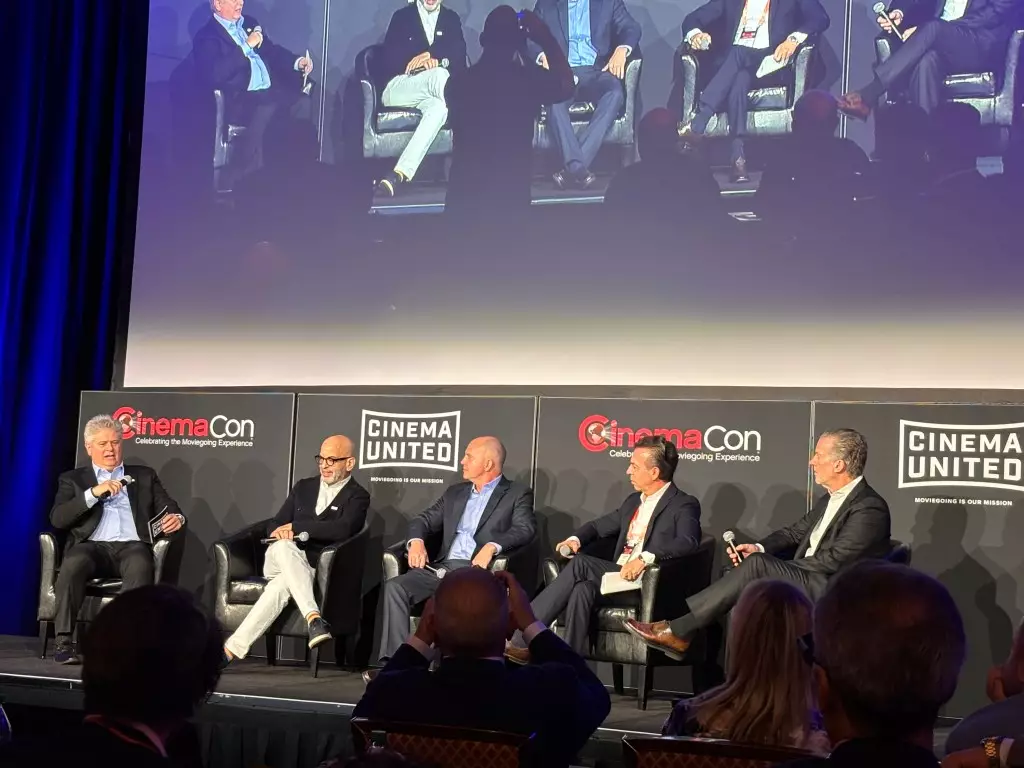In today’s cinematic landscape, the costs of film production and marketing have spiraled out of control, creating a perfect storm of challenges that threaten the very fabric of Hollywood. Jeff Goldstein, president of Global Distribution for Warner Bros. Pictures, highlighted this danger during a recent panel at CinemaCon, where he lamented the exorbitant expenses involved in bringing a film from concept to screen, as well as the uphill battle of marketing it to an increasingly fragmented audience. The financial burden is staggering, and the stakes are high; if studios don’t figure out how to navigate these turbulent waters, they risk sinking under the pressure.
The reality is stark: producing films has become an exercise in financial acrobatics, and legacy studios like Warner Bros. are struggling to adapt to an ever-evolving media landscape. The rise of streaming services has turned traditional movie-making into a high-risk venture, where the potential for profit seems to dwindle with each passing year. For established studios, the path to profitability is elusive, fraught with risks that pose questions about sustainability in modern film production.
A Fragmented Audience
The modern audience is a fragmented one, splintering into micro-demographics that refuse to be pigeonholed. Goldstein pointed out that messages need to hit a proverbial bullseye—a near-impossible task in today’s media chaos, where detrimental feedback can spread like wildfire following a film’s release. Indeed, a poorly received preview can obliterate the careful marketing strategies crafted over months or even years, leading to a steep decline in audience interest before the film has had a chance to prove itself. This instantaneous feedback loop has created a high-stakes environment where communication strategy becomes as critical as the film itself.
Mark Viane, president of International Distribution at Paramount Pictures, echoed these concerns by emphasizing the difficulty of targeting messages effectively amid the din of varying audience tastes. The financial implications are daunting, as targeted marketing often demands hefty budgets that may ultimately yield diminished returns. As studios navigate these turbulent waters, the effectiveness of marketing campaigns continues to be in question, leaving executives like Goldstein up at night contemplating the future.
The Cinematic Experience
Beyond the financial struggles, there is a deeper, existential concern regarding the cinematic experience itself. Viane pointed to the in-theater experience as paramount. With countless options for entertainment available at home, how do studios ensure audiences are incentivized to return to cinemas? Melted together are chains of issues, including overly commercialized pre-shows that can alienate moviegoers before they even see the main attraction. The importance of creating a captivating atmosphere cannot be overstated; just as a poor dining experience deters patrons from returning to a restaurant, a lackluster cinematographic environment can dissuade audiences from future visits to theaters.
This concern is not merely about convenience—it signifies a cultural shift wherein the art of storytelling relinquishes its importance to profit margins and marketing strategies. The magic of cinema must not only be preserved but enhanced; it should offer an experience that transcends traditional entertainment forms.
Future Challenges and the Path Forward
As Hollywood grapples with these economic dilemmas, the question remains: how can filmmakers and studios recalibrate their practices for success? It’s imperative for the industry to evolve, embracing novel strategies that align more closely with the expectations of today’s discerning viewers. Innovation must be at the forefront; it’s not just a matter of surviving the current challenges but finding ways to thrive creatively within them.
Executives like Goldstein acknowledge that the industry is at a pivot point, and while they express hope for an eventual turnaround, the harsh reality is that complacency is no longer an option. To “right the ship,” a reconsideration of everything from marketing strategies to the very essence of what constitutes a great film experience is essential. The responsibility falls on every part of the film ecosystem, from creators to executives, to ensure that the collective effort produces not just the next blockbuster but a culturally significant legacy that resonates with audiences for years to come.
In an age where every dollar counts, Hollywood must rediscover its artistic voice amidst the cacophony of commercial pressures, testing the boundaries of innovation to find ways to entice audiences back into their seats.

